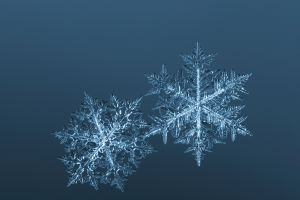Telescope Caliber
Telescope caliber is a fundamental concept in the world of astronomy and observational science.
It refers to the size of the primary lens or mirror in a telescope, which is a crucial determinant of its light-gathering ability and overall observational power.
The caliber of a telescope, often expressed in millimeters or inches, directly influences its capacity to reveal distant celestial objects and details that are otherwise hidden from the eye.
This component is crucial because it determines the amount of light the telescope can gather and, consequently, its resolving power and ability to detect faint objects.
A larger caliber allows a telescope to capture more light, leading to brighter and clearer images of distant celestial phenomena.
A larger aperture provides a higher resolution, allowing astronomers to observe finer details and structures in celestial bodies, such as the intricate surface features of planets or the fine details of distant galaxies.
Impact on Observational Capabilities
1. Light Gathering Power
One of the most significant advantages of a larger caliber telescope is its enhanced light-gathering power. Light gathering is essential for observing faint objects, such as distant galaxies, nebulae, and star clusters.
For example, a telescope with an aperture of 100 millimeters (4 inches) has four times the light-gathering power of a telescope with a 50-millimeter (2-inch) aperture.
This increased light collection capability allows for the observation of fainter objects and provides clearer and more detailed images.
2. Resolution and Detail
As mentioned earlier, a larger caliber telescope offers improved resolution, which is crucial for observing fine details in astronomical objects. The resolving power of a telescope is determined by its aperture, and a larger aperture allows for the separation of objects that are closer together in the sky.
This is particularly important for studying the structure of planets, the fine features of nebulae, and the intricate patterns of galaxies.
3. Magnification and Image Quality
While magnification is not solely determined by the caliber of the telescope, a larger aperture allows for higher magnifications without a significant loss in image quality.
This is because larger telescopes can resolve finer details and provide clearer images at higher magnifications. However, it's essential to match the magnification with the telescope's aperture to avoid excessive image degradation.
Practical Considerations for Choosing Telescope Caliber
When selecting a telescope, the caliber is one of the most important factors to consider, but it is not the only one. Several practical considerations come into play:
1. Portability
Larger caliber telescopes, while offering enhanced observational capabilities, are often bulkier and heavier. This can impact their portability and ease of setup. For amateur astronomers who wish to travel or observe in different locations, a more portable telescope with a smaller aperture might be more practical.
2. Budget
The cost of a telescope generally increases with its caliber. Larger telescopes require more materials and advanced manufacturing techniques, leading to higher prices. It's essential to balance the desired observational capabilities with the available budget.
Telescope caliber plays a critical role in determining a telescope’s effectiveness in gathering light, resolving fine details, and maintaining image quality at higher magnifications. While larger apertures offer enhanced capabilities for observing faint and distant objects, practical considerations like portability and budget should also be taken into account when choosing a telescope.
By understanding how telescope caliber impacts observational power, you can make more informed decisions about the right telescope for your astronomical pursuits, whether for hobbyist stargazing or professional research.


